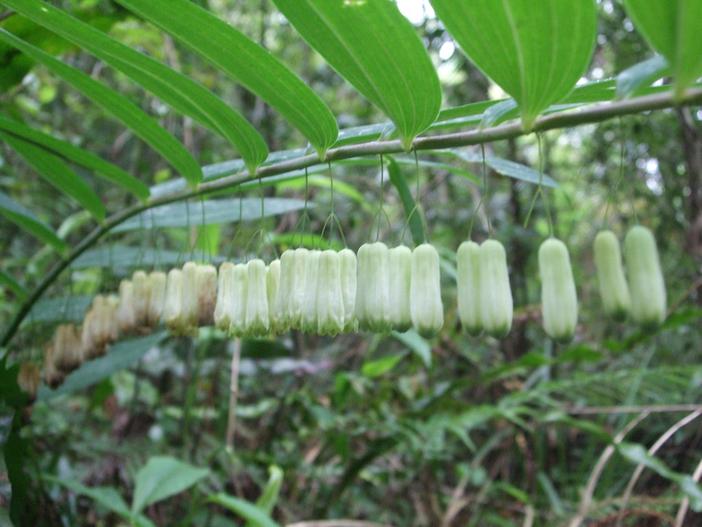Solomon’s Seal
(Polygonatum odoratum var. pluriflorum)
Solomon’s Seal (Polygonatum odoratum var. pluriflorum)
/
/

石川 Shihchuan
CC BY-SA 2.0
Image By:
石川 Shihchuan
Recorded By:
Copyright:
CC BY-SA 2.0
Copyright Notice:
Photo by: 石川 Shihchuan | License Type: CC BY-SA 2.0 | License URL: https://creativecommons.org/licenses/by-sa/2.0/ | Uploader: 石川 Shihchuan | Publisher: Flickr














Estimated Native Range
Summary
Polygonatum odoratum var. pluriflorum, commonly known as Solomon’s Seal, Angular Solomon’s-seal, or Fragrant Solomon’s-seal, is a perennial herb native to temperate regions of Korea and Japan. It is typically found in deciduous forests, grassy slopes, and shaded wetlands, often forming colonies under the canopy of trees. This plant grows at a moderate rate to a height of 2-3 feet (0.6-0.9 meters) and a width of 1-2 feet (0.3-0.6 meters). It features arching stems with alternate, ovate leaves and pendulous, tubular white or cream flowers that bloom in late spring to early summer. The flowers are subtly fragrant and are followed by blue-black berries in the fall, which are attractive to birds.
Solomon’s Seal is valued for its graceful form and the delicate appearance of its flowers, making it a favorite in woodland gardens and shaded borders. It is also used for naturalizing in shady areas. The plant is relatively low-maintenance, requiring minimal care once established. It prefers part shade to full shade and thrives in well-drained, fertile loam or clay soils with consistent moisture. While it is generally pest-free, it can occasionally suffer from slug damage. Solomon’s Seal can spread by rhizomes to form extensive colonies, which should be considered when planting to avoid unwanted spread.CC BY-SA 4.0
Solomon’s Seal is valued for its graceful form and the delicate appearance of its flowers, making it a favorite in woodland gardens and shaded borders. It is also used for naturalizing in shady areas. The plant is relatively low-maintenance, requiring minimal care once established. It prefers part shade to full shade and thrives in well-drained, fertile loam or clay soils with consistent moisture. While it is generally pest-free, it can occasionally suffer from slug damage. Solomon’s Seal can spread by rhizomes to form extensive colonies, which should be considered when planting to avoid unwanted spread.CC BY-SA 4.0
Plant Description
- Plant Type: Herb
- Height: 2-3 feet
- Width: 1-2 feet
- Growth Rate: Moderate
- Flower Color: White, Cream
- Flowering Season: Spring
- Leaf Retention: Deciduous
Growth Requirements
- Sun: Part Shade, Full Shade
- Water: Medium
- Drainage: Medium
Common Uses
Bird Garden, Border Plant, Butterfly Garden, Deer Resistant, Fragrant, Groundcover, Low Maintenance, Street Planting
Natural Habitat
native to temperate regions of Korea and Japan
Other Names
Common Names: Angular Solomon’s-seal, Fragrant Solomon’s-seal
Scientific Names: , Polygonatum odoratum var. pluriflorum, Polygonatum japonicum var. variegatum, Polygonatum odoratum subsp. quelpaertense, Polygonatum odoratum var. quelpaertense, Polygonatum officinale var. pluriflorum, Polygonatum planifilum, Polygonatum quelpaertense, Polygonatum vulgare var. macranthum,
GBIF Accepted Name: